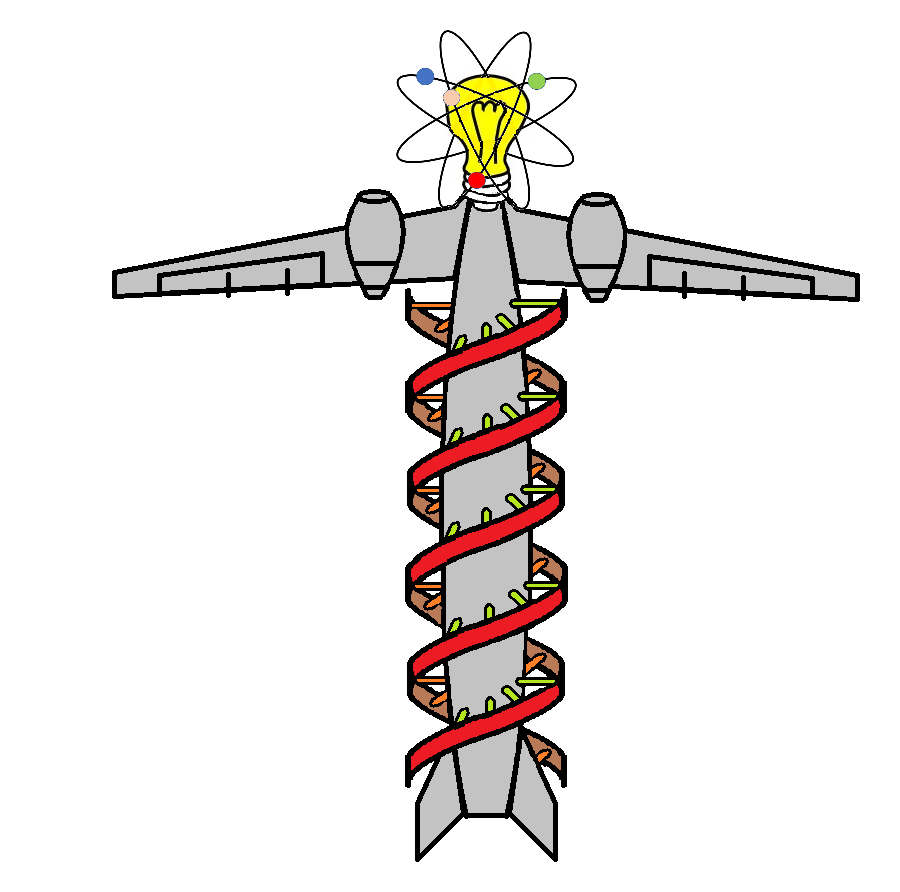Let’s take a break from the unpleasant coronavirus news of the present, and travel to the future. Specifically, let’s see how our descendants might prevent or deal with pandemic viral outbreaks.

Speculation about the future is always error-prone. Many technologies I’ll mention won’t pan out, or will introduce unforeseen problems. Also, these probably won’t eliminate the existence of viruses; new ones will mutate to get around our best efforts to defeat them. Still, those concerns never stop a SciFi writer from imagining! With that in mind, let’s time-travel.
Getting Infected
People used to pick up viruses mostly from the animal world. Now, in the future, there is less opportunity for doing that. Synthetic foods have lessened the need for humans to consume wildlife. High crop yield technologies mean we need less farmland, so we no longer destroy habitats, thus keeping wildlife in their own areas.
Other technologies have rendered humans immune to most viruses. These technologies include artificial immune systems, implanting favorable animal genes within humans, and designer babies.
Infecting Others
If someone does pick up a virus in this future time, advanced filters in building ventilation systems lessen the spread. Workplaces and transit systems contain sensors that detect whether occupants are running a fever, and alert them. Bathrooms include automated hand washing machines. Facemasks use fabrics that prohibit the flow of pathogens or bacteria in either direction. Some have opted for nasal and throat implants to do the same thing.
Alerting the World
Upon discovery of a novel virus, doctors in this future world have new ways to notify other experts. Chatbots share the information instantly. Universal translators ensure precise understanding.
Sensing Infections
Various technologies have enabled people to know at once if they’re infected, long before they feel symptoms. These include home-use scanners, (inspired by Star Trek medical tricorders) wearable and implantable sensors, digital tattoos, genetic diagnosis, and nano-med-robots.
Developing Cures
Today, in our future world, supercomputers work on vaccines immediately after notification of a novel virus. They employ advanced modeling to test the effects of drugs virtually, and in many cases can skip time-consuming animal and human trials. Resulting vaccines are then personalized, tuned to individual body chemistries.
Getting Treatment
People no longer go to a doctor’s office or hospital. Medical care is virtual now, with human doctors remaining remote. Drones deliver food and medical supplies. Robots provide in-home care, including cleaning, examining, and operating. 3-D printers manufacture pain medication in the home, meds that are tailored to the subject and provide instant relief. Recovery makes use of gaming therapy, with virtual reality helping to relax the patient’s mind.
On the near horizon is the long-sought ‘autodoc,’ a staple of 20th Century science fiction—an enclosure you climb into that cures all ills.
Tracking the Spread
Artificially intelligent algorithms conduct contact tracing analysis to map the spread of the virus, notifying people they’ve come in contact with a virus carrier. Through the use of augmented reality, virtual reality, and mixed reality, experts can track and forecast outbreaks as hotspots emerge. These same technologies permit rapid identification of the most at-risk individuals.
Isolating the Infected
As in previous ages, governments still vary in the degree of freedom allowed to individuals. Some are more coercive in enforcing quarantines than others. But artificial intelligence at least allows informed decisions based on contact tracing and mathematical modeling. Moreover, citizens have access to real-time fact-checking to distinguish truth from propaganda or bias.
Back to the Present
Unfortunately, that ends our trip to the future and we’re back in 2020 now. I know, it’s disorienting and humbling. Still, imagine a time traveler from fifty or a hundred years ago visiting our time and being equally amazed at the medical wonders we now take for granted.
For many of the ideas I mentioned above, I’m indebted to tekkibytes.com, medicalfuturist.com, futureforall.org, triotree.com, techperspective.net, fastcompany.com, defenseone.com, treehugger.com, and forbes.com.
For further trips to the future, check back frequently with—
Poseidon’s Scribe

